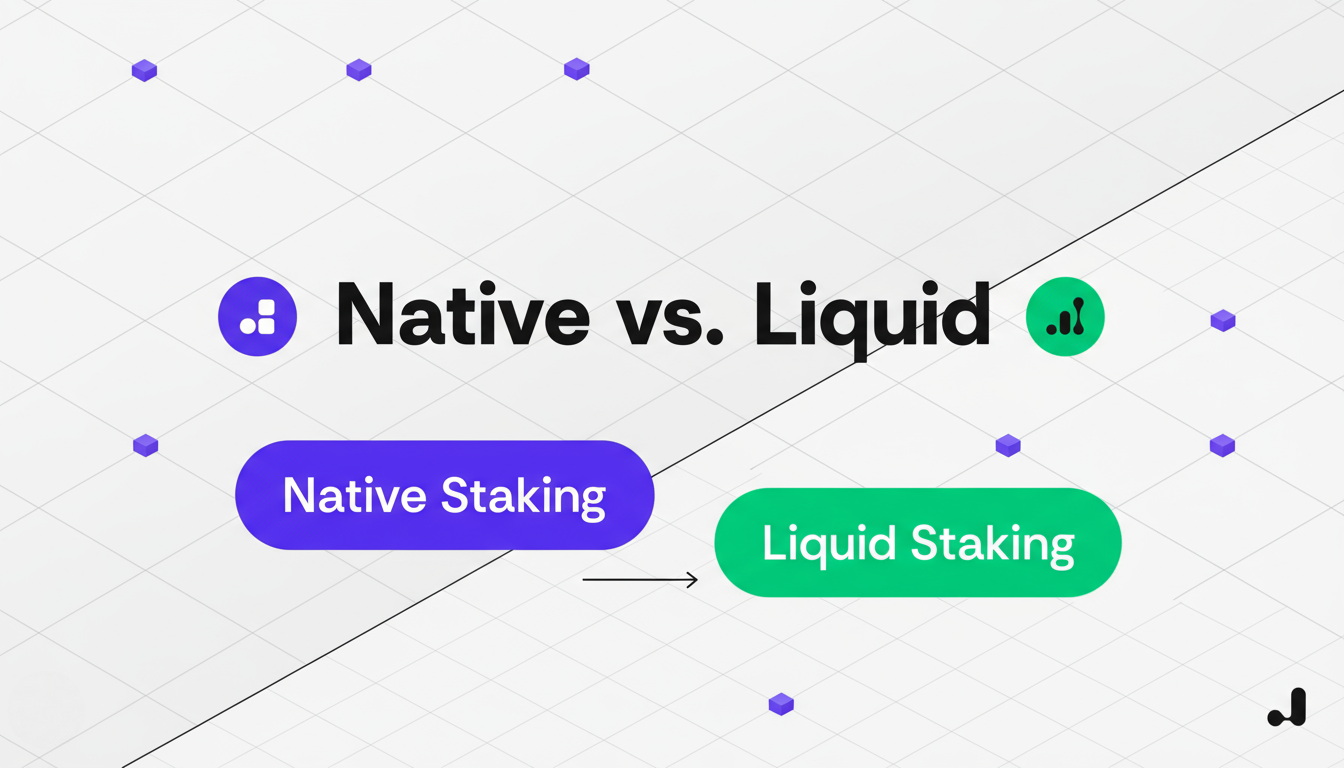When people first think about earning on their crypto, they usually start by looking into staking strategies. On Solana, this decision comes down to two clear paths: stake natively to validators or use a liquid staking pool. Both allow you to support the network and both pay yield, but the way your capital behaves after staking is very different — and that difference matters more in 2025 than it did a year ago.
Native Staking — Simple, Traditional, and Locked
Native staking means delegating SOL to a validator of your choice. It is the simplest method and the closest to the network itself. If someone asks how to stake SOL for rewards in the most “pure” way, this is usually the answer. You choose a validator, delegate, and wait for rewards to accumulate.
This approach appeals to those who want a clean, no-frills setup. But the lock-up period is the trade-off. Once you delegate, the SOL cannot be moved until you unstake — and unstaking takes time. If a new opportunity appears tomorrow, you might be unable to act. That is the main weakness of native staking in any comparison of native vs liquid staking: immobility at the wrong moment can cost you chances.
Liquid Staking — Yield Without Losing Flexibility
Liquid staking is newer and was created to solve exactly that problem. Instead of freezing tokens for weeks, you stake through a protocol like JPool and receive a liquid token (JSOL) that represents your staked position. You still earn validator rewards, but you also keep full mobility across the ecosystem.
For people trying to decide how to choose staking strategy, this “move while earning” characteristic is often the deciding factor. It is not only a technical difference — it is a behavioral one. Liquid staking is built for users who don’t just hold crypto but actually use it.
Under the Hood — Where the Yield Comes From
Both staking strategies earn rewards the same way: validators produce blocks, and delegators collect a share. With native staking you pick one validator manually. With liquid staking, the protocol delegates across multiple validators automatically. That diversification is not just comfort — it reduces reliance on any single validator’s performance.
In JPool’s case, the JSOL token accrues value as rewards accumulate. The number of tokens doesn’t increase — the ratio changes. That is one reason many users consider liquid staking among the best staking strategy Solana offers for active participants: it turns staking into an instrument, not a freeze.
Pros and Cons of Liquid Staking — Reality, Not Hype
When comparing methods objectively, you have to evaluate the pros and cons of liquid staking in practical terms:
Pros
– The funds remain liquid through a derivative token.
– Exposure is diversified across validators, instead of one.
– The liquid token can be used across DeFi to multiply returns.
– Exit is instant through swaps — no unstake wait.
Cons
– There is smart contract risk (as with any DeFi protocol).
– You rely on the platform’s design and integrations.
These are real trade-offs, not theoretical ones. Most users accept them because mobility has more value than purity in a fast ecosystem.
Who Native Staking Still Suits
Native staking is not obsolete. If someone simply wants to delegate and forget, it works well. They do not need DeFi, they don’t rotate capital, they don’t chase opportunities — they only want to earn without touching anything.
For that user, staking SOL natively has one meaningful benefit: psychological simplicity. There is nothing to manage.
Who Liquid Staking Serves Better
Liquid staking is for people who want to interact with Solana beyond holding a balance. These users move between protocols, lend, pair assets in LPs, rotate, arbitrage, or simply want to keep optionality open.
This is where JPool is relevant when someone asks about staking SOL natively or with JPool. The underlying staking still happens, but the experience aligns with an active user’s reality — not a passive one.
How to Stake SOL for Rewards With Either Method
Both strategies begin the same way: you hold SOL in a supported wallet. From there the action splits:
Native staking
- Go to the staking tab of Phantom or Solflare.
- Choose a validator.
- Delegate SOL and wait for reward cycles.
- Unstake when exiting — wait for unlock.
Liquid staking with JPool
- Go to app.jpool.one.
- Stake SOL.
- Receive JSOL instantly.
- Use JSOL in DeFi or simply hold it.
The yield origin is identical — the difference is what your wallet holds after delegating.
A Realistic Everyday Scenario
Consider two users with the same balance. Both stake 50 SOL. One uses native staking and sees rewards build passively. The other uses JPool and receives JSOL. A week later, a new opportunity launches in DeFi. The native staker watches. The JPool staker can deploy JSOL immediately without touching the underlying stake. That difference is the full meaning of mobility in practice.
Which Strategy Should You Choose?
People love to ask for “the” answer — what is the best staking strategy Solana users should follow? There isn’t one universal answer. There is only alignment between method and behavior:
– If you hold and never touch → native staking is fine
– If you move capital and plan actively → liquid staking fits better
– If you are in between → split your allocation and test both
This is the only honest way to think about how to choose staking strategy: your usage pattern decides more than the APY does.
Final Line
Native staking is stability. Liquid staking is freedom. If you want pure holding, native is adequate. If you want optionality, JPool gives you that without giving up rewards. In a network built for speed, staying liquid has become the more rational position — and that is why liquid staking through JPool is, for most users, the better fit in 2025.

Leave a Reply